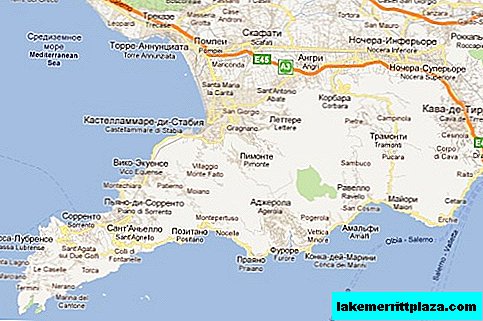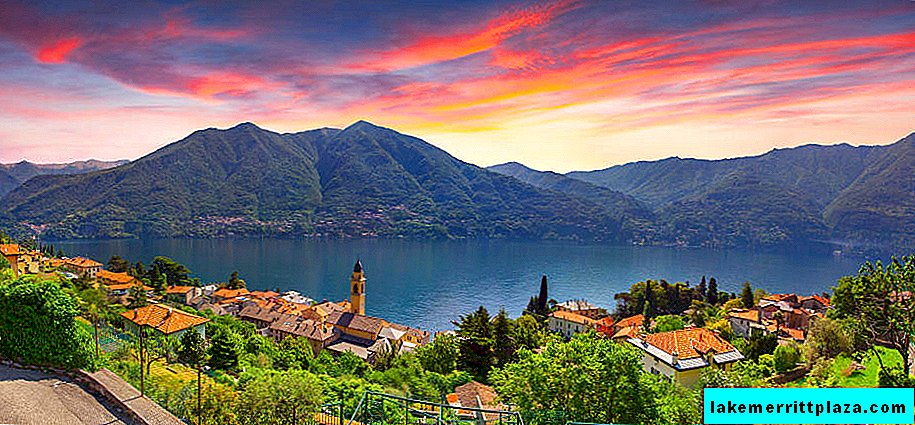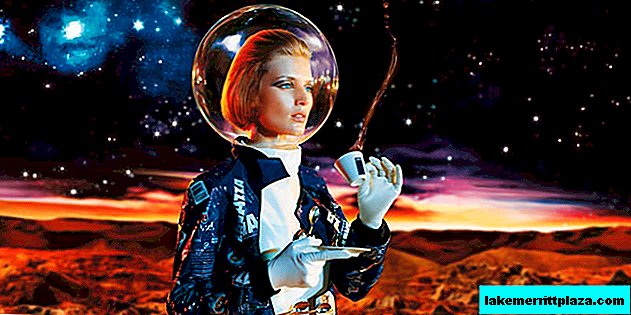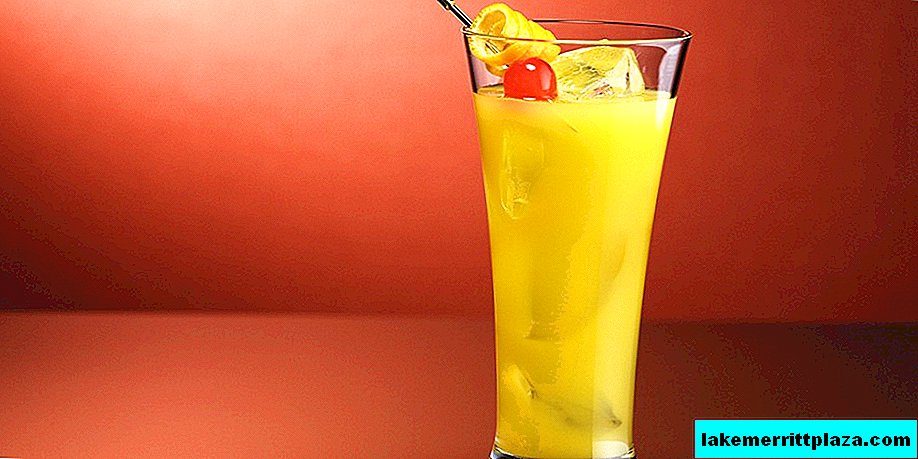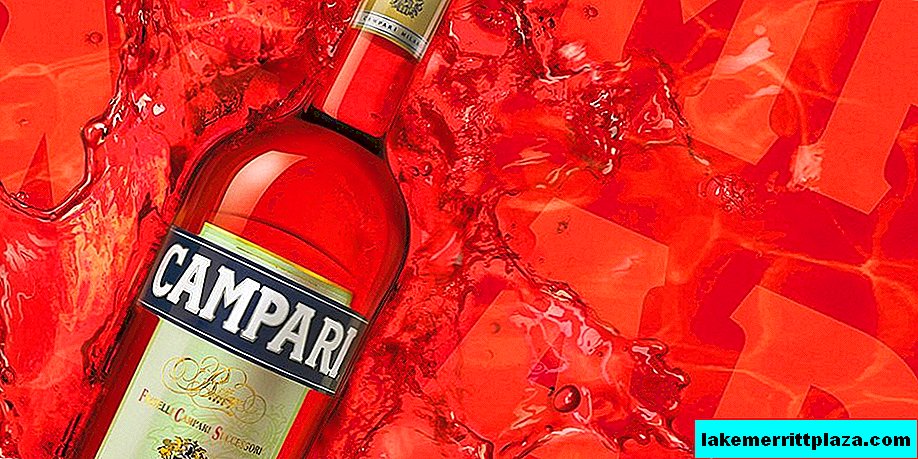Formally, St. Peter's Square, located in front of the eponymous cathedral, is located not in Rome or even in Italy, but on the territory of the Vatican city-state. But why unnecessary conventions? Heading to the cathedral, it is enough to cross a narrow white line with columns along the outer perimeter of the square - and now you are in the Vatican. Half a step back - in Italy. However, you will always have time to return, and transparent borders in the EU - it’s not God knows how unseen, but St. Peter's Square in the Vatican or, if you like, in Rome, is worth at least the Catholic Mass.
Strange road leading to the temple
There are two crossed keys on the Vatican flag. One is from the Kingdom of Heaven, the second is from the Eternal City. St. Peter's Square - a symbol of unconditional spiritual unity, embodied through architectural forms - from a bird's eye view also resembles either a huge keyhole, or another key. But, strictly speaking, St. Peter's Square in Rome is not one, but three squares: Retta ("direct"), Oblikva ("oblique") and Rustikuchi (according to the name of the palace belonging to the Rustikuchi clan).
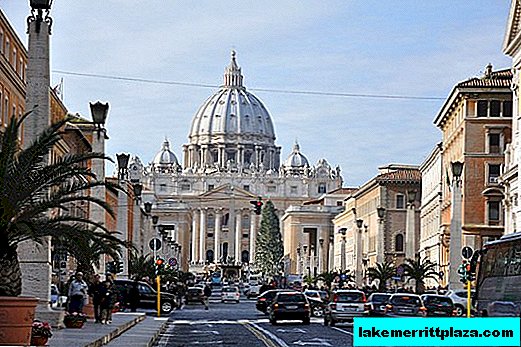
Just like the arrow of Via della Conchiliation, (Reconciliation Street), laid from the Castle of St. Angel to the Vatican in 1936-50, enhances the effect: the cathedral completely dominates the street, covering its entire horizon with its bulk.
The lanterns stylized as obelisks on both sides of the street merge into one colonnade and lead to a real obelisk in the square. But as we approach, the dome of the cathedral suddenly begins to “fail” and soon completely disappears behind the facade ...
How it all began
At the beginning of a new era on the site of the square and the cathedral - between the Vatican hill and the Yanikul hill - there were gardens and the circus of Nero. It is believed that it was in his arena that the Apostles Peter and Paul were executed. In the middle of the 1st century in the circus, an obelisk 25.5 m high, brought from Egypt in 40, was established, even under Caligula. There were many such obelisks in Rome, but only 13 have survived to this day. Residents of the Eternal City believed that these structures symbolize rebirth and power, and the hieroglyphics on their faces are secret magic formulas.
To the 4th century - the time of the construction of the first St. Peter's Cathedral - in place of the future square and the former circus, a huge necropolis grew. After the construction of the basilica in front of it, an extensive inclined esplanade was cleared from buildings and burials, on which all construction was prohibited. Esplanade was intended for mass celebrations during Christian holidays.

Vatican, Egyptian Obelisk
By the 16th century St. Peter's Square in Rome it was a large quadrangle with a height difference of up to 10 m. On inclement days, the ground cover of the area turned into an impassable swamp, which, coupled with the dilapidated basilica, was "not in the face" of the Holy See. Pope Julius II began the construction of a new cathedral, and Pius IV expanded St. Peter's Square.
In 1586, it was also used for the obelisk from the circus of Nero, which until then stood at the southern wall of the temple. Pope Sixtus V consecrated it, having cleansed it of "pagan filth" (inscriptions on the sides indicate this), and ordered it to be transferred to St. Peter's Square. The gilded ball, which adorned the top of the obelisk and kept, according to legend, the remains of Julius Caesar, was replaced by a cross with a particle of the Holy Cross from Jerusalem. Imperial dust, by the way, was never found in the ball.
To transfer a 300-ton structure to St. Peter's Square in Vatican it took 40,000 wooden shields, 40 winches and the efforts of 800 workers and 140 horses. The architect Domenico Fontana supervised the work. Under pain of death, onlookers who gathered to look at the freelance "performance" were forbidden to speak even in a whisper.
At some point, the ropes of the winch almost broke, and only the timely cry of Benedetto Bresca, the captain from San Remo - "Water to the ropes!" - helped to avoid tragedy. The breska was not executed, but generously awarded the privilege of supplying palm branches to Palm (Palm) Sunday. In the center of San Remo, there is still an area named after the resourceful captain.
Baroque illusion genius
The middle of the XVII century. Lorenzo Bernini, who won the competition of Pope Alexander VII for the design of the square, faced a monstrous unsolvability problem: how to link the cathedral with the elaborate facade, designed by Carlo Madern, brought forward, his fountain, the notorious obelisk and the old passage to the Apostolic Palace? At the same time, the elevation difference has not been canceled. But nothing is impossible for a genius if he skillfully uses the experience of no less than brilliant predecessors and contemporaries.
Construction was carried out in 1656-67. The model for the trapezoidal part located near the cathedral - Piazza Rhett - was the Capitol Square, created by Michelangelo, and familiarity with Descartes' work on optics helped Bernini finally deal with other inconsistencies.
To reduce the height difference by 4 m, the cathedral staircase was destroyed. On top of the new flooring, 2 galleries were erected and a new, 75-meter staircase, tapering as they descend, the last step of which is located just at the base of the obelisk.
Thanks to such tricks from afar, a complete illusion arises that this part of the square has the correct square shape. The continuation of the right gallery leading to the Apostolic Palace was the Rock of Regge, the famous main staircase, tapering as you climb.

Bernini Fountain. St. Petra
The ellipsoid colonnade of 2 semicircles (Piazza Obliquva), generally traditional for baroque, was rotated 90 degrees so that the long transverse axis was not perpendicular, but parallel to the facade. The rhythmic alternation of the fountain, the obelisk and another fountain, erected by Bernini on the model of Madern's work, clearly dictates to the viewer's consciousness that this is an ellipse. But the eye, accustomed to accurately determine the horizontal distance, still sees the circle.
This effect is achieved due to several factors: the size of the ellipse is 21,500 square meters. m, the angle of its slope and the four-row colonnade of 284 columns of the ascetic Tuscan order, which creates the illusion of rotation and hides the true depth of both parts of the square. You can see only the first row of columns and all the 162 statues crowning them if you stand on one of the marble disks located on both sides of the obelisk.
There are sampietrino paving stones, dark porphyry bars named after the square, and other marks. From the obelisk, which acts as the gnomon of a sundial, the lines diverge from the sides of the world in rays. Midday markers can be found between the obelisk and the fountain located on the right (if you stand facing the cathedral).

Midday markers can be found between the obelisk and the fountain.
Piazza Rusticuchi, the third “element” of the square, its “vestibule”, was broken down in place of several demolished palaces so that you could still see the whole cathedral without hindrance. It acquired its final appearance by the middle of the 20th century, during the construction of Via della Conchiliation.
Welcome, or ...?
Every Sunday at 11.50 local time on the square, everyone is waiting for the pope to appear in the second right window of the upper floor of the Apostolic Palace, reading the prayer "Angel of the Lord" and a brief sermon of the pontiff.
Wednesdays from 10 a.m. St. Peter's Square in Vatican becomes a territory for a papal audience. In fine weather, His Holiness appears on the balcony of St. Peter's Basilica to bless pilgrims from all over the world. If the weather has not set, the audience is held in a hall for 6,500 seats, built in 1964-71.

On Wednesdays, St. Peter's Square hosts a papal audience
Audience of the Pope - the event is closed. You can get to it only if you have tickets that can be purchased in advance on this site. Just remember that the audience is in great demand among tourists, and therefore those wishing to take part in it should take care of the tickets very well in advance.
If you still didn’t have an audience, then you can limit yourself to a live broadcast from the ceremony - it is shown on the huge screens installed on the square. By the way, the passage to St. Peter's Square in Rome these days may be limited.
During the Pope’s announced appeals, inaugural and festive events, St. Peter's Square seats up to 150,000 believers. But on ordinary days, there are a lot of tourists: who meticulously inspects and photographs the colonnade, monuments and fountains, who stands in a long line to the ticket offices in the Vatican Museums, who sits at the obelisk, slowly walks or purposefully goes to the Cathedral.
Visiting the Plaza is best planned as part of an excursion combining visits to the most interesting sights of the Vatican. In more detail about the most interesting routes in Russian BlogoItaliano told in this article.

You can get to the audience of the Pope only by tickets
If you decide to visit the Vatican on your own, then the entrance to St. Peter's Square and the Cathedral of the same name is free, but to visit the Sistine Chapel and the complex of Vatican museums will require tickets that are best purchased in advance through the Internet.
Ticket offices are also located on the territory of the Vatican, but in order to reach them, you will have to stand for several hours in line. Then a visit to the capital of the Catholic Church risks being remembered not only by the masterpieces of Bernini and Michelangelo.
| Check schedule and availability of tickets ››› |
Photos by: vgm8383, Paval Hadzinski, teachandlearn, Vito Palmi, Martin Fisch, Dan Cipolla, Robby Virus.

